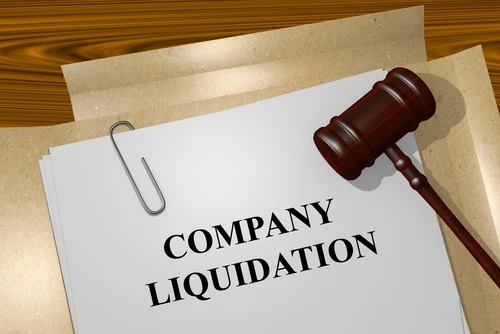The smart Trick of Company Liquidation That Nobody is Talking About
Table of ContentsGetting The Company Liquidation To WorkCompany Liquidation - An OverviewRumored Buzz on Company LiquidationThe Greatest Guide To Company LiquidationAn Unbiased View of Company Liquidation
A liquidator is specifically designated to oversee the winding up of a company's events in order for it to be shut down usually when the business is going insolvent. The liquidator is an unbiased 3rd party who supervises the sale of business assets in order to pay off any arrearages.Their role includes, yet is not restricted to: Neutral Overseer: A liquidator is entrusted with serving as an objective third celebration to look after the whole business liquidation procedure. Create Declaration of Affairs: Liquidators should produce a thorough statement of events document. This paper is distributed to creditors, describing the current financial condition of the business at the time of its liquidation.
After the liquidation of a firm, its existence is erased from Companies Residence and it ceases to be a legal entity. If directors navigated the procedure uncreative, there would certainly be no fines or individual responsibility for strong financial obligations anticipated. Currently, with a fresh start, supervisors can check out new business chances, though professional appointment is a good idea.
The Ultimate Guide To Company Liquidation
If more than 90% of all business investors concur, liquidation can take area on brief notification within 7 days, the minimal legal notice for lenders. Usually, the larger the liquidation and the even more assets and capital the company has, the longer the process will take.

We recognize that no 2 companies coincide, which is why we will make the effort to be familiar with your organization so we can advise the best course of action for you. We only work in your best rate of interests, so you can be absolutely positive in the service we offer.
The 6-Second Trick For Company Liquidation
In the UK, there is an established procedure to closing down or restructuring a restricted firm, whether it is solvent or insolvent. This procedure is called liquidation and can only be handled by a certified bankruptcy practitioner (IP) according to the Bankruptcy Act 1986. There are four main types see page of business liquidation process: Creditors' Voluntary Liquidation (CVL); Required liquidation; Administration; and Participants' Volunteer Liquidation (MVL).

In these situations, it is necessary that the business discontinues trading; if the business remains to trade, the directors can be held directly accountable and it can cause the bankruptcy professional reporting wrongful trading, referred to as misfeasance, which may cause lawsuit. The directors designate a bankruptcy practitioner and when this has been concurred and confirmed, there is a conference with the shareholders.
The supervisors are no longer entailed in what takes place, including the sale of the business's assets. If the supervisors desire any of the possessions, they can notify the IP.
Not known Details About Company Liquidation
The major distinction is that the business's creditors put on the court for a winding up order which forces the insolvent firm right into a liquidation procedure. Lenders take this action as a last hotel since they haven't gotten settlement with other kinds of arrangement. The court appoints an insolvency practitioner, additionally referred to as an official receiver, to perform the required business liquidation visit homepage procedure.
This type of business liquidation is not volunteer and supervisors' conduct is reported to the UK's Assistant of State once the liquidation procedure has actually been finished. Any supervisor that falls short to work together with the IP or has been involved in supervisor misbehavior, or an illegal act, might result in serious effects.
It is made use of as a way to safeguard the firm from any legal activity by its lenders. The supervisors of the company agree to make routine settlements to resolve their financial obligations over a duration of time.
The Main Principles Of Company Liquidation
This gives check out here the company with time to develop a plan moving forward to rescue the company and stay clear of liquidation. At this point, directors hand control of the company over to the appointed manager. If a firm is solvent yet the supervisors and investors want to shut business, a Participants Voluntary Liquidation is the right option.
The company liquidation procedure is taken care of by a liquidator assigned by the supervisors and shareholders of the company and they must authorize a declaration that there are no creditors continuing to be. The liquidation procedure for an MVL is similar to that of a CVL in that properties are become aware however the profits are distributed to the directors and the shareholders of the company after the liquidator's charges have been paid.